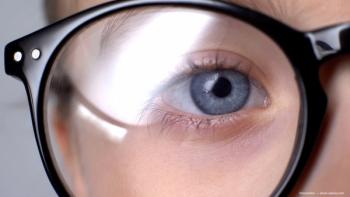
Prolate shape better maintained in wavefront-optimized PRK
The cornea maintains a better prolate shape after myopic PRK using a wavefront-optimized versus a wavefront-guided ablation profile.
Key Points
Chicago-The cornea maintains a better prolate shape after myopic PRK using a wavefront-optimized (WFO) versus a wavefront-guided (WFG) ablation profile.
However, in a retrospective comparative clinical study, the difference in corneal aspher icity between treatment groups did not translate into any significant differences in best-corrected visual acuity (BCVA) or contrast sensitivity, said Maj. Vasudha A. Panday, MD, at the annual meeting of the American Society of Cataract and Refractive Surgery (ASCRS).
"A myopic excimer laser ablation flattens the central cornea, but the laser beam loses efficiency as it moves out toward the periphery of the ablation, and this leads to increased higher-order aberrations (HOAs) and loss of the prolate nature of the cornea," said Dr. Panday, consultant to the USAF Surgeon General for Refractive Surgery, Chief, Joint Warfighter Refractive Surgery Center, Wilford Hall, San Antonio.
Further studies need to be performed to compare WFO and WFG ablations for treatment of hyperopia or mixed astigmatism and to see if there is a visually significant difference when "super-vision," or vision better than 20/20, is evaluated, she said.
Data for the study were obtained from the Lackland Air Force Base Warfighter Refractive Surgery database, which was reviewed to identify all patients who underwent myopic PRK between July 1 and Dec. 15, 2010. Patients were excluded from the analysis if they had previous ocular laser surgery or incomplete follow-up to 6 months. WFO PRK was performed using an excimer laser (WaveLight Allegretto, Alcon Laboratories), whereas another excimer laser (VISX STAR S4 IR, Abbott Medical Optics) was used to perform the WFG treatments. Neither WFO PRK nor WFG PRK treatments are approved by the FDA.
There were 58 eyes in the WFG group and 42 eyes that had WFO treatment. Patients in the WFG group had a mean age of 31 years, mean manifest sphere of –4.05 D (range –0.75 to –8.50 D), and mean manifest cylinder of 1.09 D (range 0 to 2.50 D). For the WFO group, patients had a mean age of 28 years, mean manifest sphere was –3.18 D (range –1.75 to –5 D), and mean manifest cylinder was 0.62 D (range 0 to 2 D).
Effect on corneal shape
Treatment effect on corneal shape was evaluated using the Q value, which was measured using a Scheim pflug camera imaging system (Pentacam, Oculus) and represents the rate of change of corneal curvature from the center to the periphery. A negative Q value represents a more prolate shape.
As expected, the results showed that the Q values in both groups became more positive after the PRK treatment, indicating some loss of the prolate shape. However, the change in Q value per diopter of attempted sphere correction was significantly less in the WFO-treated eyes than in the WFG group (0.116 versus 0.141; p < 0.004).
Since the WFG treatment group included higher myopia than the WFO group, the analysis was repeated excluding eyes with myopia >–5.50 D. However, the results were nearly identical and the change in Q value per diopter of sphere was still significantly less in eyes having the WFO treatment compared with the WFG group (0.116 versus 0.144; p < 0.004).
There were no significant differences between the two treatment groups in preoperative or postoperative values of BCVA and low-contrast 5% BCVA. Mean BCVA was 20/18.3 for the WFG eyes and 20/18.0 in the WFO group both preoperatively and postoperatively.
Mean postoperative low-contrast BCVA values were 20/34.9 in the WFG group, which was slightly improved from the preoperative value of 20/38.8, and 20/35.4 in the WFO group, which was slightly worsened from the preoperative value of 20/33.8.
Editor's Note: Dr. Panday and her co-authors received "Best Paper of Session" recognition at the ASCRS meeting for this presentation.
FYI
Maj. Vasudha A. Panday, MDE-mail:
Dr. Panday and her co-authors have no financial interests relevant to the material presented. She stated that her views are her own and do not reflect those of the U.S. Air Force or Department of Defense.
Newsletter
Don’t miss out—get Ophthalmology Times updates on the latest clinical advancements and expert interviews, straight to your inbox.



















































.png)


